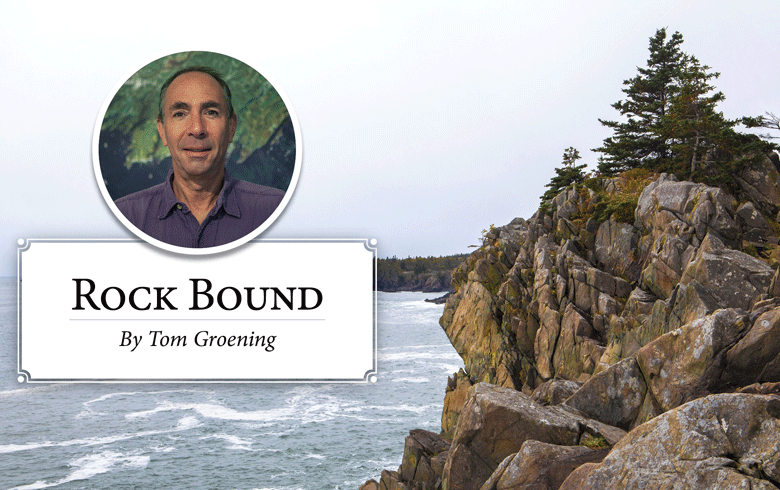We can watch live satellite images of a typhoon on the other side of the planet. We can record thousands of photographs in a device not much bigger than a deck of playing cards. We can inject a genetic replica of a virus to boost immunity. But something as elemental and indiscriminate as fire remains a devastating force in our lives.
The blaze that destroyed the heart of Port Clyde’s working waterfront in late September is a stunning reminder that for all our advances, our lives, our homes and businesses, and our communities can be destroyed in a matter of hours by fire. It leaves me heartsick, especially when I think of the people who built those businesses and buildings.
Four years ago, I had a pleasant conversation with Amy Barstow, who with her husband Andy owns and operates the Monhegan Boat Line, about their plans to construct a new building and pier. The pier would be higher, to protect it from rising seas, and the new two-story building—65-feet by 30-feet—would replace an old and sagging warehouse of sorts.
True to form, they have kept the boats running to Monhegan, shielding that island community from most of the effects of the fire.
They purchased the business in 2010 from Andy’s parents. Amy has worked at the business since 1996.
She answered my questions back then in a “just the facts” manner; polite, yes, but I remember being struck by the sense that for her and her husband, this was a scary proposition, this substantial financial commitment, and the fear may have spilled over into the interview.
In fact, rereading my story about the project, I see that I mentioned her facial expression betraying the enormity of the commitment, though she declined to tell me the budget for the work.
I have interviewed my fair share of entrepreneurs over the decades, and the good ones—if I may impose a moral judgement here—betray the weight they carry of being responsible for people’s paychecks. The Barstows fit this profile. Which makes their loss that much more tragic.
True to form, they have kept the boats running to Monhegan, shielding that island community from most of the effects of the fire.
The Port Clyde General Store and the Dip Net restaurant also were effectively destroyed by the fire, and both no doubt represent equally committed owners and managers. And original art by Jamie and N.C. Wyeth was also destroyed, a cultural loss to Maine.
Until the businesses have new structures, workers won’t have paychecks and the community will miss its beating heart.
Fires have marked turning points in the history of many Maine communities. In 1947, a blaze swept through Bar Harbor and Acadia National Park, forever changing the town and even the undeveloped expanses of the park. Anniversaries of the conflagration are duly marked with TV news specials and newspaper coverage.
Much of the eastern end of Portland’s peninsula burned on July 4 1866, possibly started by a firecracker.
In Belfast, fires destroyed various parts of the downtown and waterfront in 1865, 1873, 1885, 1896, and 1899. The city’s beautiful brick downtown buildings were a response to the vulnerability to fire of the wooden structures that preceded them.
In Eastport, a blaze in 1886 destroyed ten wharves and 50 buildings. Several years ago, I dined in a restaurant there, called Landmark 1887, located in the first floor of a large brick building. Several of the brick buildings in town sported the 1887 date.
And that’s the odd thing about tragedy and history. We offhandedly rattle off the long-ago dates of these events as if they were barren of emotion and crushing economic impact. Today, we have a fresh reminders that this is not so, including the devastating conflagration in Maui.
Will a new Port Clyde emerge, as happened in other Maine towns after fires?
Here’s a clue from our 2019 story about the new building: “We are doing it with our customers in mind, and the community,” Amy said of the upgrades. “It will make for better service,” Andy said, and noted that, “long after we’re gone,” the new infrastructure will remain. May it be so, again.
Tom Groening is editor of The Working Waterfront. He may be contacted at tgroening@islandinstitute.org.





